Fashion & Technology
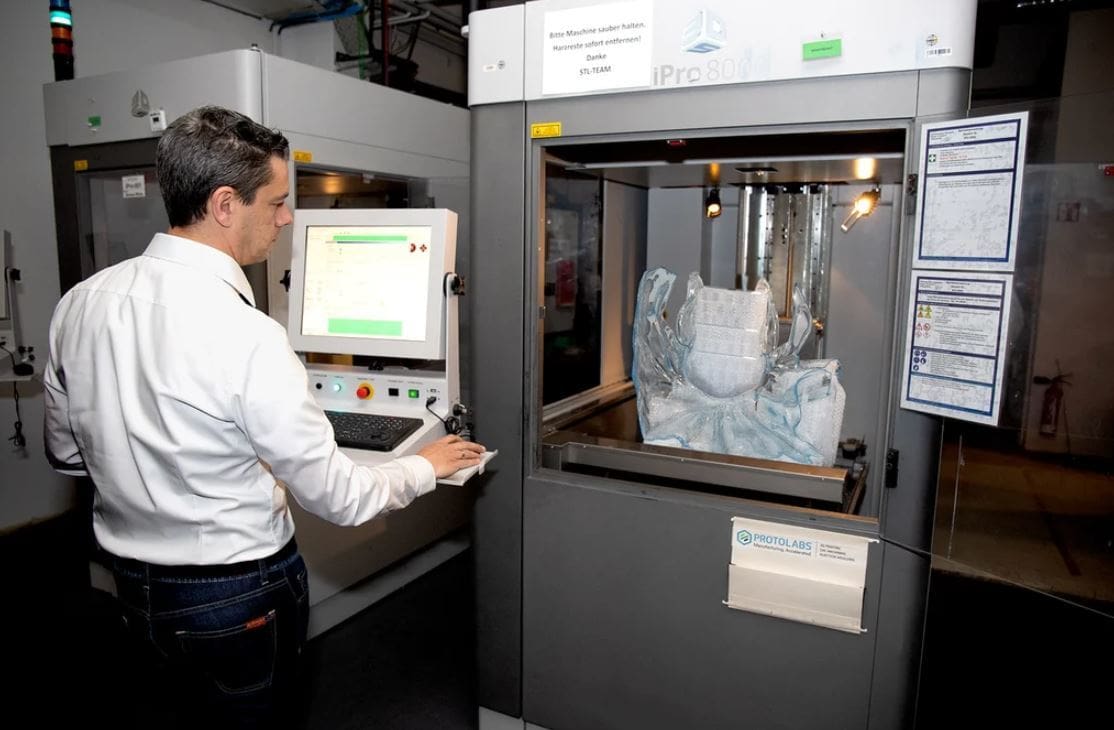
3D printing has rapidly found its way into almost every aspect of our modern world, including high fashion. The fashion industry as we know it is changing for the better thanks to 3D printing technology. Whether in pursuit of modern looks or the incorporation of technology into fashion, fashion designers are increasingly working with 3D printing companies and technology.
The fashion world’s embrace of 3D printing is emblematic of its long history of merging with art, craft, and technology. From new weaving technologies in the 19th century to the development of synthetic fibers in the 20th to Hussein Chalayan’s mechanized dresses in the mid-2000s, designers have often pushed the boundaries of fashion. The latest forays into 3D printing remind us that the possibilities are limitless.
In this article, we’ll present our favorite 3D printed dresses from the past decade (ordered by most recent first) and explain some of the technical details of their construction. Sadly, most of them aren’t DIY, but they give you a little taste of how 3D printing is changing the game in the fashion industry.
Innovation Through 3D Printing
The field of 3D printed fabrics is still in its infancy, but that hasn’t stopped designers and 3D printing companies from working together to find or develop materials appropriate for clothing. Materials such as nylon, polyamide, and even titanium have been printed to realize spectacular, wearable, and in some cases, flexible apparel creations.
Most of the time, stereolithography (SLA) and selective laser sintering (SLS) 3D printing are used to print high fashion. These materials and methods not only ensure accurate printing, but they also have finer finishes, which eases the post-processing process.
Customization is another area of innovation. One of the struggles with shopping for clothing nowadays is finding items that you like and in the right size. 3D printed clothing could change this problem as the technology allows for 3D scanning and custom-fit prints.
Without further ado, let’s “sashay” through recent fashion history.
Rose Petals
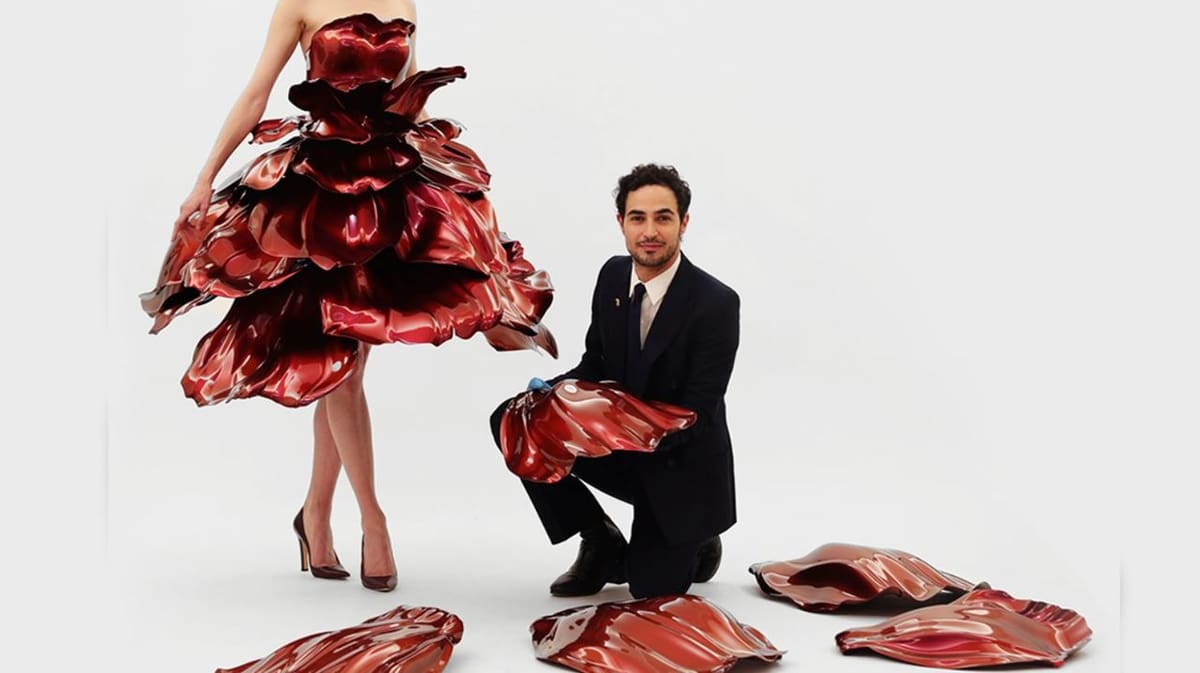
The Rose Petal Dress by Zac Posen, in collaboration with GE Additive and Protolabs, is perhaps one of the most well-known 3D printing marvels in the fashion industry. The dress debuted, with several other 3D printed pieces, at the 2019 Met Gala, one of the biggest fashion events in the world.
Modeled after a rose, this dress consists of 37 printed petals attached to a frame. The dress’ petals were printed in a plastic polymer using an SLA 3D printer, while the frame of the dress was printed in titanium with electronic beam melting (EBM). When it was finished, the dress ended up weighing 30 pounds and took 1,100 hours to print and assemble.
- When was it made? 2019
- Who designed it? Zac Posen
- Technical details: The dress was printed using SLA and EBM 3D printing processes.
Loom

Loom was designed to overcome the challenges of 3D printing actual fabrics. Her design focuses on creating a wearable and flexible dress that is just as comfortable as “regular” clothing.
Inspired by Wayuu, an indigenous tribe in northern Colombia, Sanchez designed the dress to be evocative of the tribe’s well-known patterns and textiles. As a fun fact, the design also adapts to physical changes in body size, so women could wear it the entire length of their pregnancy, for example.
Sanchez collaborated with Cosine Additive to design and print her design. They chose a fairly-common consumer 3D printing material known as thermoplastic polyurethane (TPU), which is strong and flexible. The dress was printed on an FDM printer, specifically, a Cosine Additive AM1.
- When was it made? 2018
- Who designed it? Maria Alejandra Mora Sanchez
- Technical details: The dress was printed in TPU on an FDM 3D printer.
Paralympics
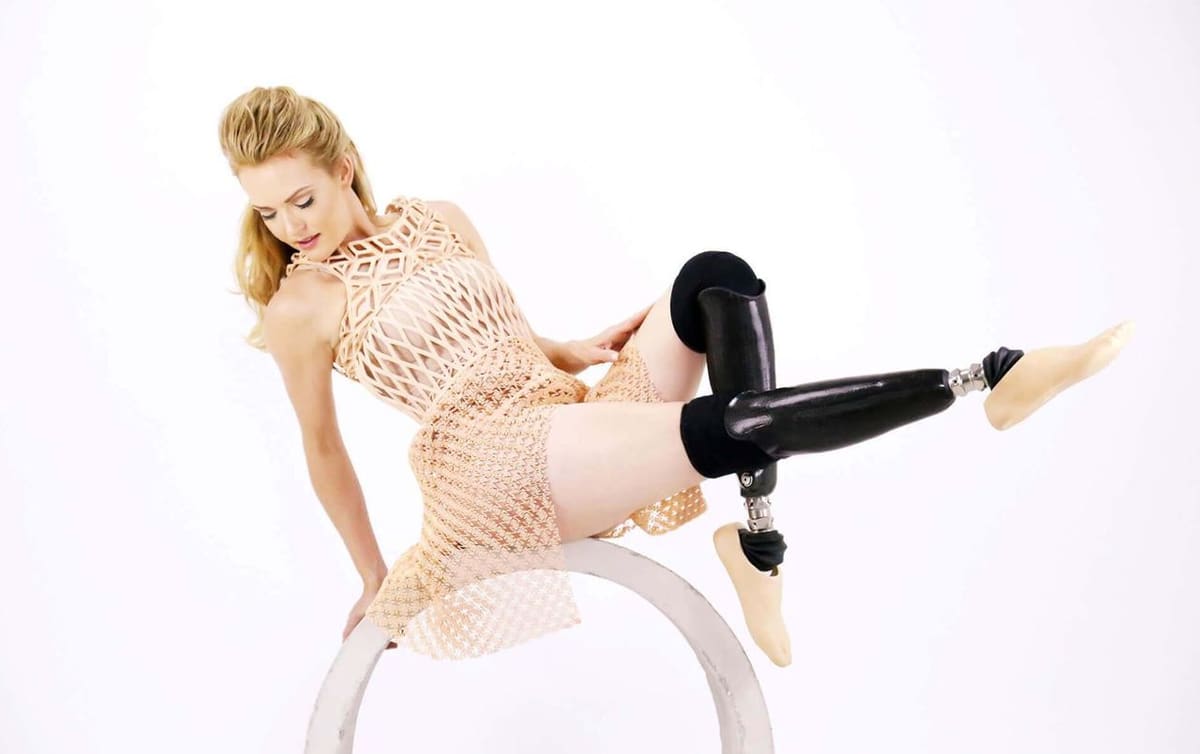
The Paralympics Dress by Danit Peleg was designed for Amy Purdy, an athlete and double leg amputee who performed during the opening ceremony of the 2016 Paralympics in Rio de Janeiro. Thinking of Purdy’s life story, a rebirth of sorts, Peleg drew inspiration from Botticelli’s The Birth of Venus for the design of the dress.
Purdy’s body measurements were obtained by 3D scanning, and Blender was used during the design process to help finalize the dress’ design. Peleg worked with the Spanish printing company Recreus and used their soft and flexible material FilaFlex for the dress, which makes the dress flexible and flowy unlike the stiffer and sculptural dresses on this list. After multiple versions, the final dress was printed in 100 hours.
- When was it made? 2016
- Who designed it? Danit Peleg
- Technical details: This dress was fitted to Purdy using 3D scanning technology, 3D modeled using Blender, and printed over the course of 100 hours in Recreus’ FilaFlex material.
Vortex

The Vortex Dress is another great dress that highlights the use of 3D printing to make extremely irregular shapes. The Vortex Dress was designed by Laura Thapthimkuna who was inspired by outer space and biomorphic funnel-like structures.
The design process for this dress took over a year, starting with sketches and ending with a 3D model. With the help of Stephen Ions, her 2D sketches were translated into a 3D model with ZBrush and Maya. In addition to other design considerations, Thapthimkuna had to account for the weight distribution of the dress.
In collaboration with Materialise, the final design was printed in Mammoth Resin material on an SLA printer.
- When was it made? 2015
- Who designed it? Laura Thapthimkuna
- Technical details: This design was modeled with ZBrush and Maya, then printed in Mammoth Resin on an SLA printer.
Spider
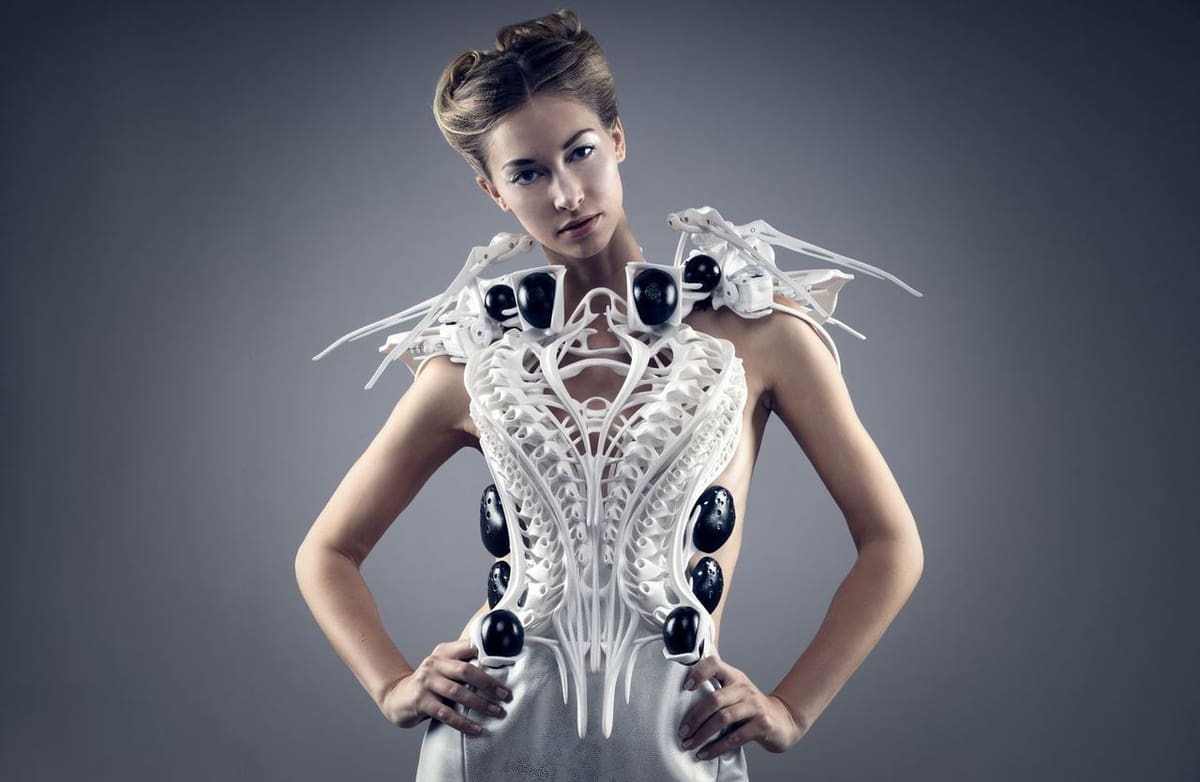
The Spider Dress by Anouk Wipprecht looks nothing short of futuristic and fashionable. With multiple eyes and a jutting neckpiece reminiscent of spider legs, this dress is a rework of an earlier version of the design.
Wipprecht worked with the 3D printing company Materialise to develop and print the design. Magics, the company’s 3D printing software, was used as an STL editor to identify any possible errors in the design, such as gaps and rough surfaces. The final dress was then made on an SLS 3D printer.
Besides being 3D printed, technology plays another role in this dress. Thanks to built-in proximity sensors, an Intel Edison chip, and LEDs, the dress’ spider legs extend outward and its LEDs flash when people get too close. What a useful dress in the era of Covid-19!
- When was it made? 2015
- Who designed it? Anouk Wipprecht
- Technical details: Wipprecht’s creation was printed on an SLS 3D printer and also incorporates sensors and microcontrollers (Edison chip) to achieve robotic effects.
https://www.youtube.com/watch?v=0mS1ynkSuks
Incunabula
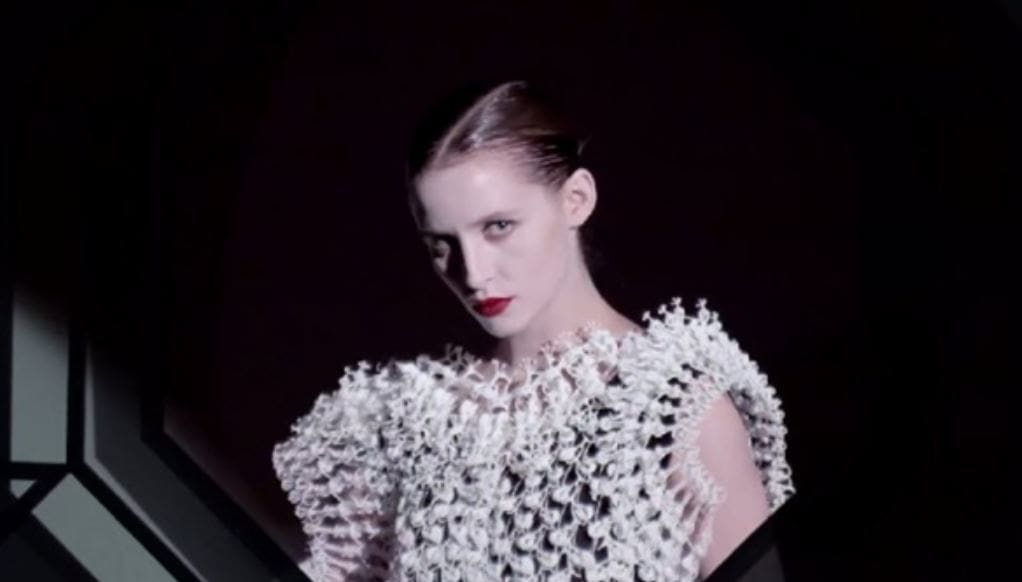
The Incunabula dress was created as part of the installation 1914 Now: Four Perspectives on Fashion Curation. A collaboration between ModeMuseum Antwerp director Kaat Debo, designer Alexandra Verschueren, and artist Tobias Klein, the dress’ design unites inspiration from 19th-century Irish crocheted lace patterns with modern fabrication methods, namely 3D printing.
Multiple objects were 3D scanned, each with a 0.1-mm tolerance, to arrive at the design, which was then modeled with 3ds Max mesh modeling software. With the help of Materialise, the dress was 3D printed on an SLS 3D printer in polyamide material.
- When was it made? 2014
- Who designed it? Kaat Debo, Alexandra Verschueren, and Tobias Klein
- Technical details: 3D scanning and mesh modeling with 3ds Max were used during the design process. The final dress was printed in polyamide on an SLS 3D printer.
Kinematic
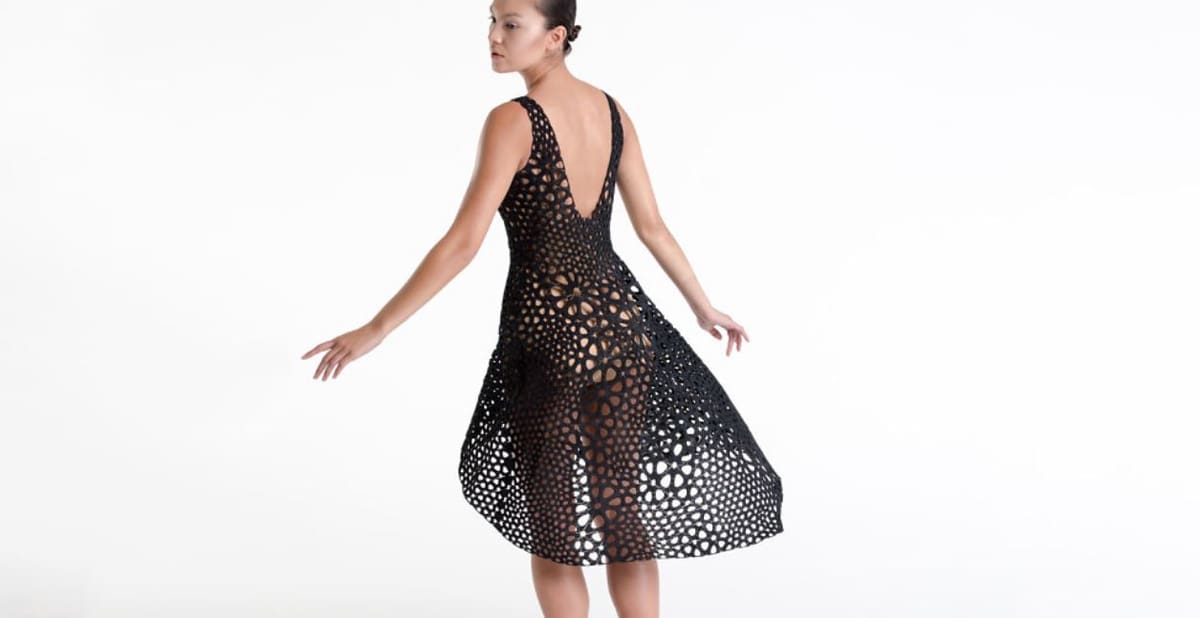
The Kinematic Dress was designed by Nervous System and has been exhibited in New York’s Museum of Modern Art, Boston’s Museum of Fine Art, and a variety of other highly regarded museums around the world.
Thanks to thousands of triangular panels that are linked together by hinges, the dress is flexible and has a wonderful drape. The model was designed so that the dress could be printed in one piece and with just one printer. The final design was printed in full on an SLS printer in a nylon material.
- When was it made? 2014
- Who designed it? Nervous System
- Technical details: The design was printed as a single print in nylon on an SLS 3D printer. To print the dress in one piece, it was folded up during printing with the hinged triangle panels pre-connected.
Gems of the Ocean
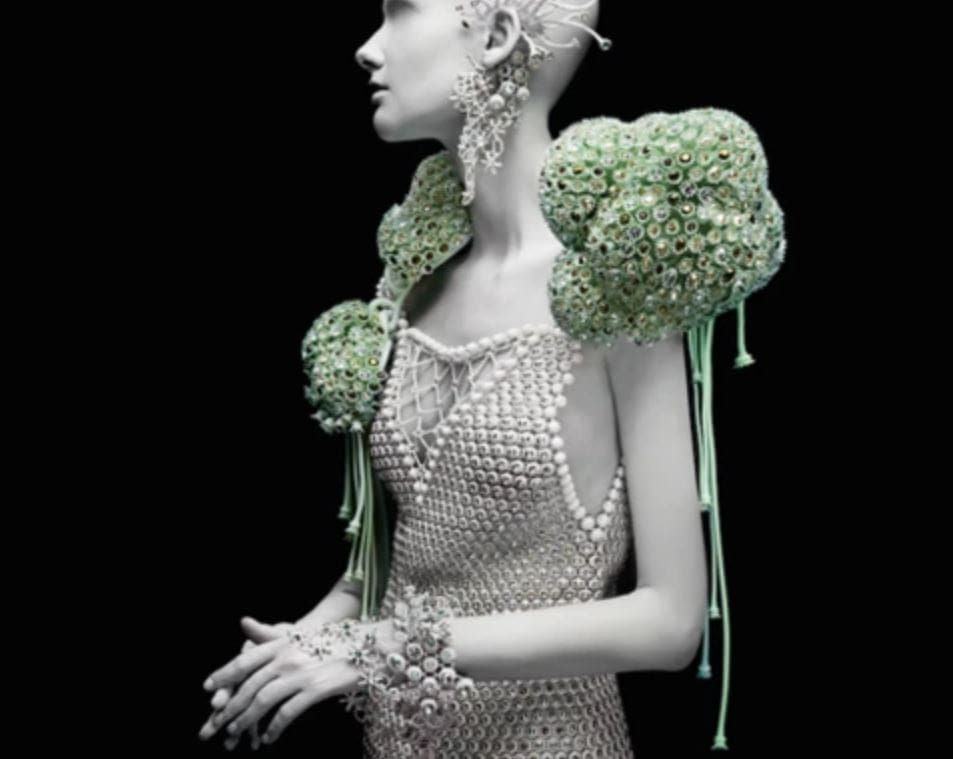
Presented at Meckler Media’s 3D Print Week in New York, Gems of the Oceans collection includes the “Dive Into Me” gown, an incredible floor-length 3D printed gown, as well as printed shoes, earrings, and bracelets. The project was a joint effort between the fashion designer Melinda Looi, 3D designer Samual Canning, and the 3D printing company Materialise.
SolidWorks and Magics were used to design and assemble the dress for 3D printing. The design consisted of 19 separate STL files that were assembled in Magics, then printed all together in polyamide on just one SLS 3D printer. The dress was finished with 5,000 Swarovski Crystals that were inserted in designated gaps all around the dress.
- When was it made? 2013
- Who designed it? Melinda Looi
- Technical details: The dress was modeled with SolidWorks and Magics, then printed in polyamide on an SLS 3D printer in one piece.
Skeleton
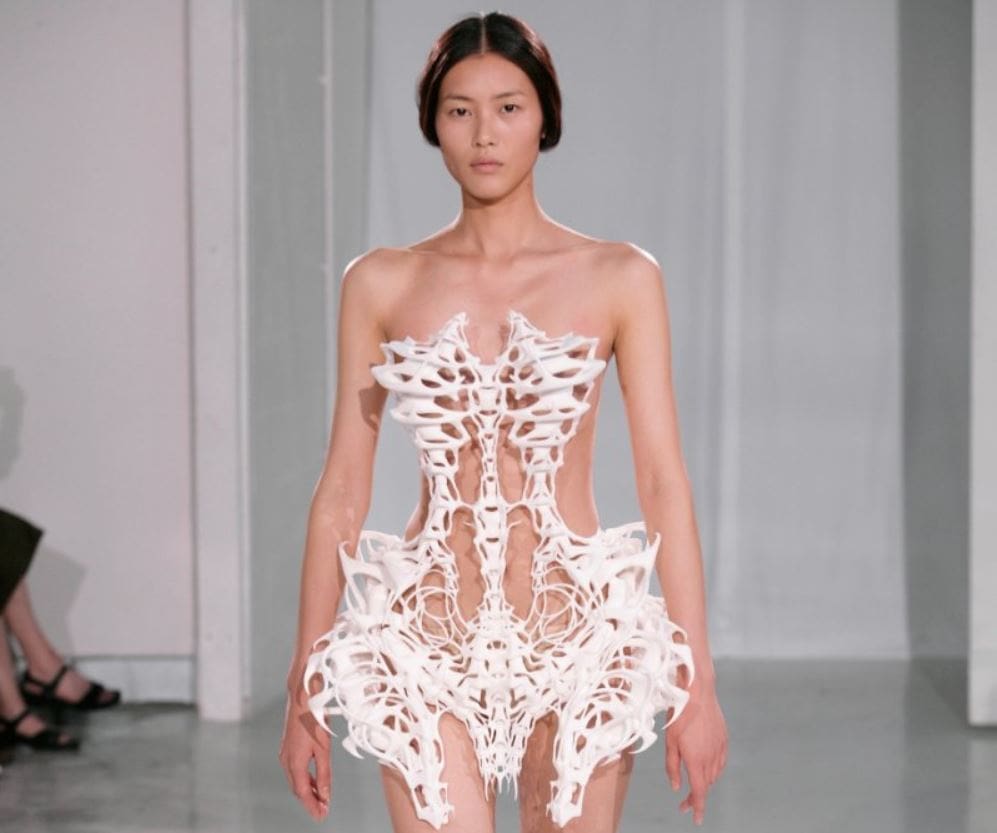
Intended to make one feel as though the body has been turned inside out, Iris Van Herpen’s Skeleton Dress is among the most innovative and artistic of 3D printed dresses. As such, it has been featured in a number of museums, including the Royal Ontario Museum, Atlanta’s High Museum of Art, among others.
In collaboration with architect Isaie Bloch and Materialise, the dress was designed and finally printed in polyamide with an SLS 3D printer. It was printed in numerous separate parts that were later assembled. In total, the dress took two months to design and a week to fully print.
- When was it made? 2011
- Who designed it? Iris Van Herpen
- Technical details: The dress was printed in polyamide using Materialise’s laser sintering process.
DIY: Hex
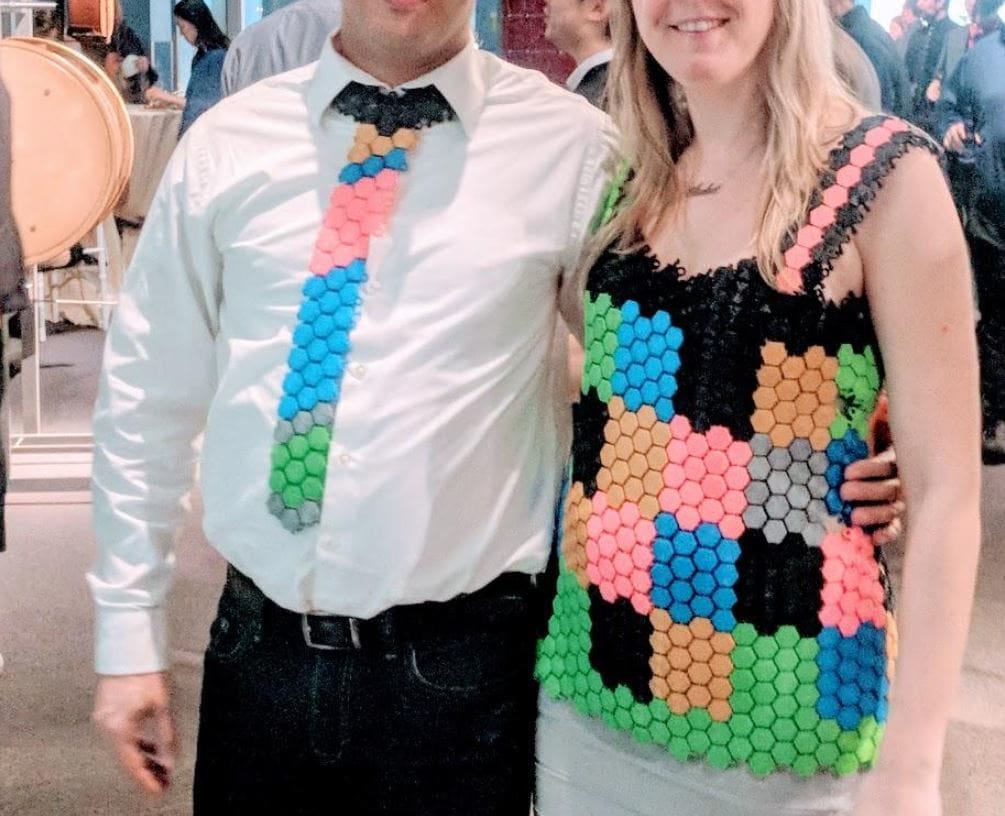
Seeing all of the amazing 3D printing projects that have been done in the fashion world, you may be wondering how to print something at home on your own.
While the other dresses that make up this list are either artistic one-off pieces, customized to fit a specific person’s body, or so unbelievably complicated to print, the Hex Dress is 3D printed high fashion that is affordable, simple, and customizable, allowing it to be worn and printed by anyone!
Adapted from a hex chain mail design, the Hex Dress is constructed out of smaller pieces that are printed and then assembled to make the dress. It can be made to fit your body depending on the number of hex plates you print. The back of the dress also has holes where a cord can be used to tie the dress together.
This design proves that you don’t need a huge and expensive printer to make yourself into a 3D printed fashionista.
- When was it made? 2017
- Who designed it? amirbeygi
- Technical details: The dress uses a chain mail structure, whose exterior part should be printed face down and with a 0.2-mm layer height according to the original maker.
Lead image source: FashionTech
License: The text of "3D Printed Dress: 10 Awesome Projects" by All3DP is licensed under a Creative Commons Attribution 4.0 International License.
